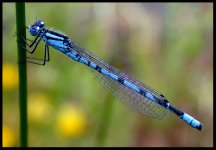andrew_chick
Lincolnshire Birder
Over the summer, I have started taking digital pictures of dragonflies. I feel that one or two of them are really very nice pictures.
I have two questions;
1) If I want to get some of them published, what should I do? Do I leave them as they came out of the camera? Or is it best to clean them up in photoshop first?
2) How do I go about getting them published? DO I just send them straight to magazines, or is it best to join an agency?
I have attached just one picture as an example.........
Andrew
I have two questions;
1) If I want to get some of them published, what should I do? Do I leave them as they came out of the camera? Or is it best to clean them up in photoshop first?
2) How do I go about getting them published? DO I just send them straight to magazines, or is it best to join an agency?
I have attached just one picture as an example.........
Andrew




